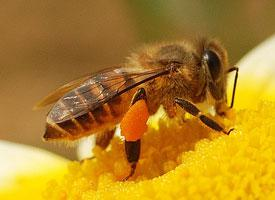
Váhy a míry
| Délka | 2 cm |
|---|
Popis zvířete
The Rock Bee, scientifically known as Apis dorsata, is a species of giant honey bee native to the forested ecosystems of southern and southeastern Asia. This fascinating creature plays a pivotal role in the environment as a prolific pollinator, contributing significantly to the biodiversity of its habitat. Apis dorsata is distinctive not only because of its considerable size but also due to its unique nesting and social behaviors.Characteristically, the Rock Bee is larger than many other bee species, with adults averaging around 17 to 20 mm in length. They exhibit a striking appearance; their bodies are predominantly black, interspersed with bands of yellow across the abdomen, which serves as a warning to potential predators about their potent sting. The wings of the Rock Bee are translucent, extending beyond the length of their body, enabling them efficient and robust flight capabilities.
One of the most remarkable aspects of Apis dorsata is its nesting behavior. Unlike other bees that may nest in cavities or construct hives in protected areas, Rock Bees are known for building large, single-comb nests in the open. These nests are typically found hanging from the branches of tall trees, cliffs, or even buildings in urban areas, making them a common sight in their native regions. These exposed nests can reach impressive sizes, sometimes over a meter in width, and house thousands of individuals.
Rock Bees exhibit a highly social structure within their colonies, which are composed of a single queen, thousands of female workers, and, during breeding seasons, male drones. The queen is the sole egg-layer in the colony, while the worker bees are responsible for foraging for nectar and pollen, nest construction, and colony defense. The drones' primary role is to mate with the queen, after which they typically die.
An interesting aspect of Apis dorsata's behavior is their defensive strategy. When threatened, they employ a defense mechanism known as "shimmering," where individuals in the outer layers of the swarm rapidly flick their wings in unison, creating a wave-like effect that can deter predators and protect the colony.
Rock Bees are essential pollinators, feeding on the nectar and pollen of a wide variety of flowering plants. Their foraging activities facilitate the cross-pollination of many species of plants, thus playing a crucial role in the reproductive cycles of these plants and contributing to the overall health of their ecosystems.
Humans have harvested honey from Apis dorsata for centuries. The collection of wild honey from Rock Bee nests is a traditional practice in many parts of Asia, although it can be a dangerous endeavor due to the bees' aggressive nature when disturbed. The honey produced by Rock Bees is highly valued for its medicinal properties and distinct flavor.
However, like many species, Apis dorsata faces threats from habitat loss, pesticide use, and climate change, which could impact their populations and, by extension, the ecosystems they support. Conservation efforts are crucial to ensure the survival of this species and the continuation of their role as key pollinators in their native habitats.
In summary, the Rock Bee (Apis dorsata) is an extraordinary insect, distinguished by its size, nesting habits, and vital role in the environment. Its existence underscores the intricate connections within ecosystems and the importance of conserving natural habitats to maintain biodiversity.
Podobná zvířata
Nové fotografie zvířat
Top 10 zvířat
- Dolphin gull (Leucophaeus scoresbii)
- Japanese macaque (Macaca fuscata)
- Stone loach (Barbatula barbatula)
- Russian tortoise (Testudo horsfieldii)
- Galápagos tortoise (Geochelone nigra complex)
- Greek tortoise (Testudo graeca)
- Diana monkey (Cercopithecus diana)
- Common flying dragon (Draco volans)
- Moustached guenon (Cercopithecus cephus)
- Galápagos penguin (Spheniscus mendiculus)


